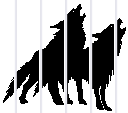
A member of an early Morello counterfeiting gang, Isadoro Crocevera was one of a few gang members arrested for passing counterfeit currency in 1903. He was charged along with Giuseppe DePrima, Giuseppe Giallombardo and Salvatore Romano.
It was neither Crocevera's first involvement with the Mafia underworld nor his last.
In Palermo, Sicily, during the 1890s, Crocevera - likely a Palermo native - was known to have been friendly with Giuseppe DiCarlo, later the crime boss of Buffalo, NY. Immigrants to the U.S., both settled for a while in New York City. DiCarlo moved on to Buffalo, NY. Crocevera, a Brooklyn resident (he is known to have lived with his wife at 63 Duffield Street at least between fall of 1918 and his death), regularly visited him there. DiCarlo and Crocevera's visits were interrupted for a period of about two and a half years before they last got together.
During Crocevera's final visit to Buffalo, he became involved in a gunfight in front of DiCarlo's saloon, 166 Front Ave., Buffalo. In the Aug. 8, 1920, shooting, Buffalo resident Vincent Vaccaro was wounded in the leg; Crocevera was shot in the back and killed.
Police decided that Joseph DiCarlo Jr. and Crocevera argued with Vincent and Anthony Vaccaro. DiCarlo was charged with causing Vincent Vaccaro's injury. Vincent Vaccaro accepted responsibility for killing Crocevera, but there was some suspicion that he was shielding his brother.
Not surprisingly, Crocevera worked at the Brooklyn docks. He was a stevedore foreman for the Pierce Brothers firm. Many Sicilian and Italian immigrants found employment at the docks, and stevedoring was often a cover for organized criminals.
Crocevera left behind a large family. The 1920 U.S. Census shows Isidoro, his wife Marianna and their seven children living at 63 Duffield Street, Brooklyn. The 1930 U.S. Census shows six Croceveras still living at that address.
The head of the household in 1930 was Anna, then 43. As he registered for the World War I draft, also while living at Duffield Street, Crocevera indicated that his wife's name was Mary. The 1920 census also calls her Mary. Immigration records explain the reason for the inconsistency. On Sept. 1, 1909, Marianna Carbone arrived in New York with three children to be with her husband Isidoro Crocevera.
The identities of the children are a bit of a problem. At the time of Marianna's 1909 immigration, she had with her:
- daughter Sara, 7;
- son Giovanni, 3,
- daughter Francesca, whose age is illegible.
In 1920, some of the children reportedly changed gender. They were:
- son Samuel (Salvatore), 18, age match for daughter Sara above;
- son John (Giovanni), 13, a match for Giovanni above;
- son Frank, 11, probable match for daughter Francesca above;
- daughter Frances, 10;
- son Solarto, 7;
- son Joseph (Giuseppe), 4;
- daughter Theresa, 2.
In 1930, there were three sons and two daughters:
- son Frank, 22;
- son Salvatore, 17, probably the Solarto above;
- son Joseph, 15;
- daughter Frances, 20;
- daughter Teresa, 13.
Those remaining children in 1930 were unmarried. The house was shared with three other families, McClean, Vannon and Cuchio.
Just months before his Crocevera's death, he was visited by a relative from Palermo, Sicily. On Jan. 5, 1920, his 41-year-old brother-in-law Giorgio Mazza entered the port of Boston, heading to Crocevera's residence in Brooklyn.
 I've used a bit of color-coding to help visitors track down items not related to the Morello-Lupo counterfeiting operation. Examples: Items about Lieutenant Petrosino's assassination are shown with a light blue background. Events related to the conflict between the Terranova Mafia and the Camorra are shown with a light green background.
I've used a bit of color-coding to help visitors track down items not related to the Morello-Lupo counterfeiting operation. Examples: Items about Lieutenant Petrosino's assassination are shown with a light blue background. Events related to the conflict between the Terranova Mafia and the Camorra are shown with a light green background.





